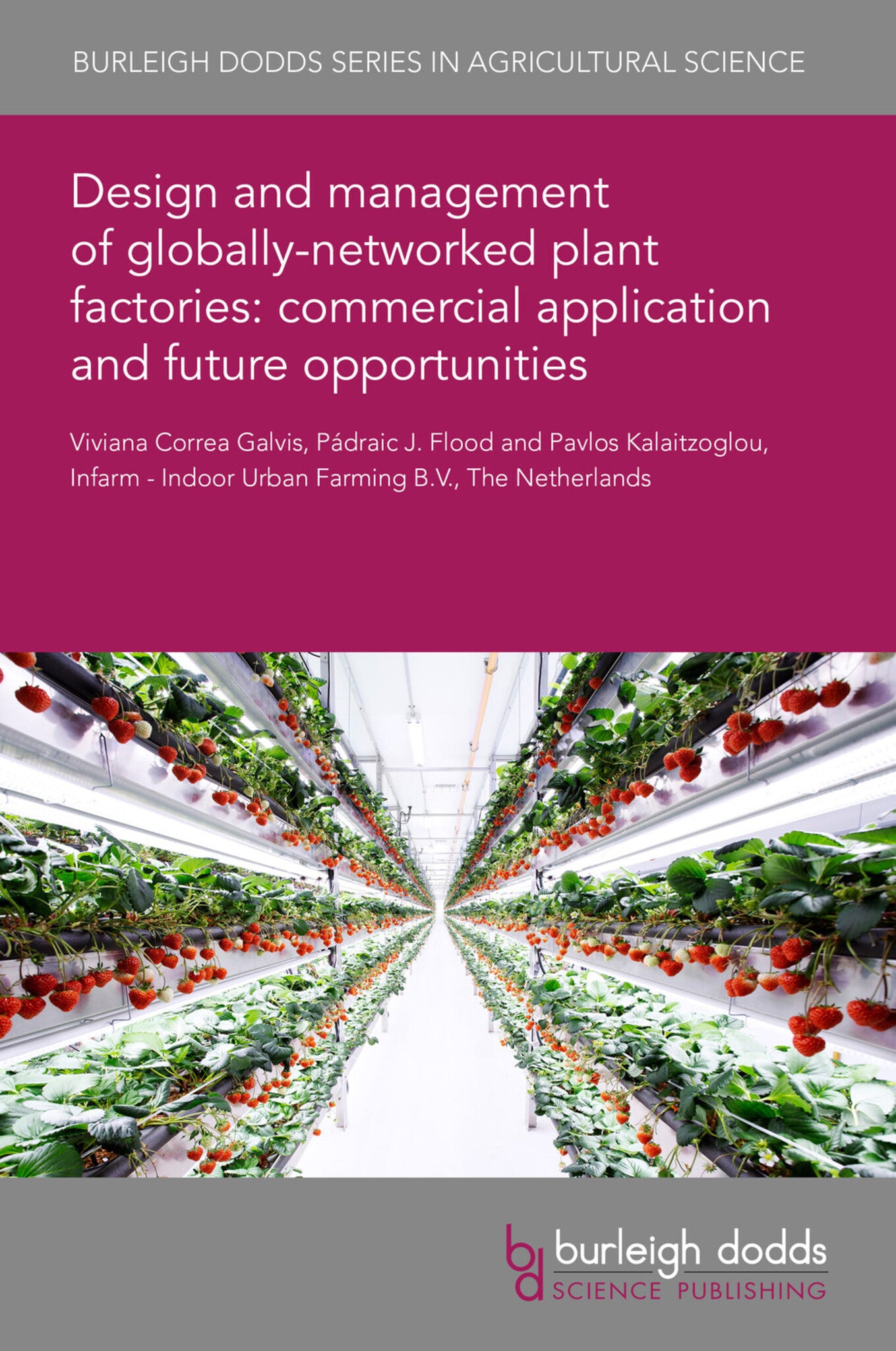We're sorry. An error has occurred
Please cancel or retry.
Design and management of globally-networked plant factories: commercial application and future opportunities

Some error occured while loading the Quick View. Please close the Quick View and try reloading the page.
Couldn't load pickup availability
- Format:
-
14 September 2023

Plant production in plant factories with artificial lighting (PFAL) can be done continuously for similar crops regardless of location and climate, allowing interconnectivity of production worldwide. A combination of a PFAL modular system with data acquisition and analysis tools has the potential to improve crop production in PFALs. Using real time monitoring and AI driven adjustment of the growing environment can improve the resource use efficiency of PFALs worldwide. In this chapter we describe the main elements required to successfully build a global network of PFALs based on the experience of Infarm, a company that built the first world‘s cloud connected PFAL network.

SCIENCE / Life Sciences / Horticulture, Commercial horticulture, TECHNOLOGY & ENGINEERING / Agriculture / Agronomy / Crop Science, TECHNOLOGY & ENGINEERING / Agriculture / Sustainable Agriculture, Sustainable agriculture, Agricultural science, Agronomy and crop production

- 1 Introduction
- 2 A globally networked business model
- 3 Infarms product catalog
- 4 System configuration and description
- 5 Uniqueness, strengths and weaknesses
- 6 The future of networked plant factories
- 7 Catalyzing a sustainable food production system
- 8 Acknowledgements
- 9 Appendix
- 10 References



